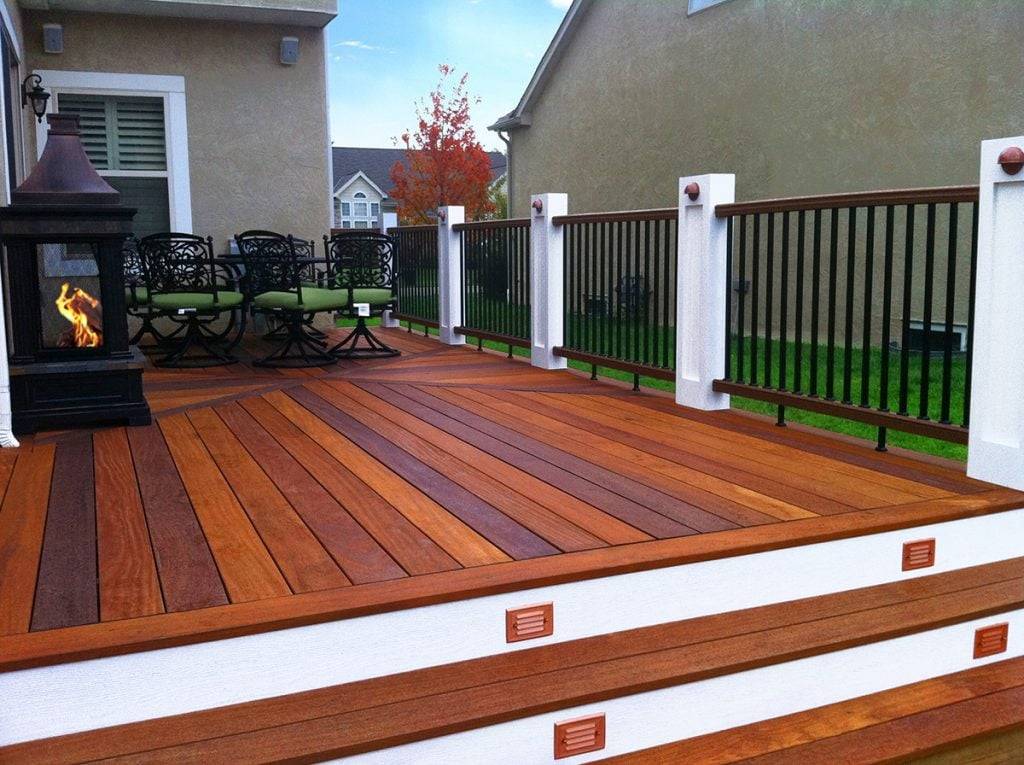Stripping your deck back to bare wood is a crucial step in restoring its natural beauty, especially if the old stain, paint or finish has weathered, faded, or started peeling. While pressure washing may seem like the easiest method, it’s important to approach it with caution, particularly if your deck is made from softwoods like pine, cedar, or redwood.
Here’s how to effectively strip decking and what you should consider before starting.
Pressure Washing: Proceed with Caution
Pressure washing can quickly strip dirt, grime, and old finishes off your deck, but it comes with risks. Softwoods such as pine, cedar, and redwood are especially vulnerable to the intense force of a pressure washer. Here’s why:
- Risk of Damage: Softwoods are more likely to splinter or gouge when exposed to high-pressure water. Even a momentary lapse in attention can leave your deck boards scarred.
- Water Penetration: The force of the water can push moisture deep into the wood’s pores. This can prolong drying times, making it harder to apply a new stain or finish evenly. In the long run, moisture trapped in the wood can lead to warping, mold growth, or rot.
- Incomplete Removal: It’s important to note that power washing will usually not remove all the paint, stain or varnish off your old deck.
If you choose to use a pressure washer, it’s important to keep the nozzle at a distance of at least 12-18 inches from the surface of the deck and to use the lowest pressure setting possible and the widest angle tip to minimize damage. For softwoods, however, it’s often better to skip pressure washing altogether.
Sanding: The Best Method for Stripping to Bare Wood
When it comes to stripping a deck down to bare wood, sanding is the safest and most effective option. Sanding allows you to remove old finishes while also smoothing out imperfections and preparing the surface for a new stain or sealant. Here’s why sanding is a better choice:
- Precision: Sanding gives you complete control over how much material you remove, ensuring you don’t over-sand or damage the wood. This is especially important for softwoods, but it also works well for hardwoods.
- Even Finish: Sanding ensures an even surface that’s ready to accept new finishes. Unlike pressure washing, which can leave the surface rough, waterlogged or not completely stripped, sanding provides a clean slate.
- No Water Damage: Since sanding is a dry process, you eliminate the risk of forcing water into the wood or causing long-term moisture issues.
For best results, use a belt sander, orbital sander or floor sander with a coarse grit to remove the old finish, and follow up with a finer grit for a smooth, even surface. Be sure to sand along the grain of the wood to prevent scratches.
When to Consider Resurfacing Your Deck
If, during the stripping process, you notice significant wear, rot, or decay in your deck boards, it might be time to consider resurfacing instead of simply refinishing. While softwood decks tend to show signs of wear more quickly, even hardwoods can deteriorate over time if they haven’t been maintained properly.
Resurfacing your deck is an excellent opportunity to upgrade to a longer-lasting, more durable wood species. Some of the best hardwoods for deck resurfacing include:
Ipe: Known for its incredible density and resistance to rot, insects, and weathering, Ipe can last 40-50 years or more with minimal maintenance.

Cumaru: Another dense hardwood, Cumaru is resistant to decay and insect damage, making it an excellent choice for deck resurfacing.

Tigerwood: Famous for its stunning grain patterns, Tigerwood is also highly durable and offers natural resistance to rot and decay.

Garapa: A more affordable hardwood option, Garapa still provides excellent durability and a beautiful golden hue.

Brazilian Redwood: This hardwood is prized for its deep, rich color and extreme resistance to rot and insect damage.

Resurfacing with hardwood decking not only revitalizes the appearance of your deck but also extends its lifespan significantly, reducing the need for frequent maintenance and repairs.
Final Thoughts
Stripping your deck back to bare wood is a project that requires patience and the right tools. While pressure washing can be tempting, it’s important to weigh the risks, especially for softwood decks. Sanding remains the best way to achieve a smooth, bare wood surface that’s ready for a new finish. And if your deck boards are showing too much wear and tear, resurfacing with durable hardwoods like Ipe, Cumaru, Tigerwood, Garapa, or Brazilian Redwood is a worthwhile investment that will keep your deck looking beautiful for decades.
By taking the time to properly strip and, if necessary, resurface your deck, you can ensure it remains a stunning and long-lasting outdoor space for years to come.
